NIWAP Upcoming Webinars
- Webinar: Naturalization of VAWA, SIJS, U, and T Visa Recipient Survivors: TTA from USCIS and NIWAP (September 23, 2022)
- Webinar: New Regulation Policies and Court Rulings’ Impact on State Courts Issuing Special Immigrant Juvenile Status (SIJS) Orders (October 4, 2022)
- Webinar: What Judges, Attorneys, and Prosecutors Need to Know About How VAWA Confidentiality Impacts Discovery in Cases Involving Immigrant Survivors (October 14, 2022)
Naturalization of VAWA, SIJS, U, and T Visa Recipient Survivors: TTA from USCIS and NIWAP
Friday, September 23, 2022, 12:00-1:30 pm EST
Description
This webinar will provide participants with an overview of the naturalization process of VAWA, SIJS, U, and T visa recipients. U.S. Citizenship and Immigration Services (USCIS) will discuss their work to remove barriers to citizenship and promote naturalization under Executive Order 14012 and the Interagency Strategy for Promoting Naturalization, as well as review the naturalization application process and address the particular circumstances, needs, and concerns of lawful permanent residents who were VAWA self-petitioners, T and U visa holders, and Special Immigrant Juveniles.
Information regarding the training and technical assistance NIWAP can provide on immigrant survivors’ naturalization, and other Training and Technical Assistance (TTA) immigration matters will also be shared during the webinar.
Faculty
- Leslye E. Orloff, Director,NIWAP, American University, Washington College of Law
- Kelly Ryan, USCIS, Senior Advisor USCIS
- Mary Flores, USCIS, Chief of Citizenship Education Branch
- Colleen Zengotitabengoa, Chief of the Refugee and Asylum Law Division in the USCIS Office of Chief Counsel
- Edna Yang, Co-Executive Director, American Gateways
Target Audience
This FREE webinar is designed for victim advocates, attorneys, and law enforcement, prosecutors, judges, OVW grantees, other victim service providers who would like up-to-date information on how NIWAP can support their work, as well as how to aid noncitizen survivors in attaining naturalization.
Tuesday, October 4, 2022, 3:00-4:00 PM EST
Description
In 2022, United States Citizenship and Immigration Services issued new Special Immigrant Juvenile Status (SIJS) regulations and policy guidance (March 2022) and an updated SIJS policy manual (May 2022). In August 2022 the California Supreme Court issued a ruling In Re Guardianship of Saul H. that provides helpful direction to state courts issuing SIJS predicate orders.
This webinar will provide updates, answer questions, and describe the impact of these new regulations, policies, and court rulings for state juvenile and family court judges issuing predicate orders that SIJS eligible children need to file for SIJS immigration relief.
Faculty will provide practice tips for judges and lawyers in addition to discussing best practices for drafting state court orders. Faculty will also describe the impact these new policies and rulings have for state court practice in SIJ S cases and how these policies benefit the vulnerable immigrant children seeking help from state courts and through SIJS immigration protections.
Faculty
- David B. Thronson, Director, Talsky Center for Human Rights of Women and Children, Michigan State University College of Law
- Hon. Victor Reyes (Ret.), Judge-In-Residence, National Council of Juvenile and Family Court Judges (NCJFCJ)
- Leslye E. Orloff, Director, National Immigrant Women’s Advocacy Project (NIWAP), Washington College of Law
Target Audience
This webinar is designed for state court judges and the attorneys who represent immigrant children seeking SIJS orders from state family and juvenile courts.
Friday, October 14, 2022, 1:00-2:30 pm EST
Description
Violence Against Women Act (VAWA) confidentiality offers federal immigration law protections enacted to prevent perpetrators from learning about, interfering with, and obtaining information contained in survivors’ victim-based applications for immigration relief (VAWA, Battered Spouse Waiver, U and T visa cases). The faculty (judge, former prosecutor, family lawyer) will discuss how courts, prosecutors and attorneys should respond when offenders seek discovery of VAWA confidentiality protected information in criminal, family, and civil court cases. Best practices for anticipating, preparing for, and addressing VAWA confidentiality discovery issues in a manner that promotes and protects victim safety and offender accountability will be highlighted. Attendees will receive up-to-date VAWA confidentiality case law; DHS policies, and practice pointers.
Faculty
- Hon. Mary Weir, Jackson County, Missouri, Associate Circuit Judge
- Jane Anderson, Attorney Advisor, AEquitas
- Leslye Orloff, Director, NIWAP
Target Audience
This webinar is designed for judges, prosecutors, victims’ family and civil lawyers, victim advocates, and OVW grantees.

